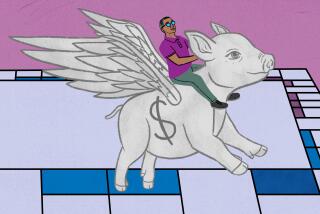Approaching the Economic Edge
When Debra Potter was forced by multiple sclerosis to stop working as an insurance agent, and UnumProvident Corp. -- which had her covered under an employer-provided disability policy -- refused to pay benefits, her family’s income plummeted by more than 90% in two years.
Although the insurer has recently relented, the Potters’ finances have yet to recover.
Their income plunge is a dramatic illustration of a larger trend -- a substantial shift of economic risk from the broad shoulders of business and government to the backs of working families.
“The erosion of government- and employer-provided safety nets has meant that the very large tranche of Americans who value economic security have no place to go, a situation we last saw during the Great Depression,” said UC Berkeley economist and economic historian J. Bradford DeLong.
What has happened in the case of disability insurance, especially employer-provided coverage, shows how changes in legal theory, public policy and business practice that were largely intended to make the U.S. more prosperous have pushed many Americans closer to the economic edge.
Last year, the Los Angeles Times sought to gauge the dimensions of this broad risk shift by taking a page from the financial markets -- where the riskiness of a stock is judged by the volatility of its price -- and measuring a similar kind of volatility for working families’ income.
With the help of economists at Johns Hopkins University and UC Davis, The Times examined the income records in a government-funded database that has followed the same nationally representative sample of 5,000 families and their spinoffs for nearly 40 years.
The Times’ key finding, reported last fall: The size of the annual income swings that families experience has nearly doubled between the early 1970s and the start of this decade. Generally, the greater the income swings, the more economic risk a family faces.
The weakening of the disability safety net is particularly striking because unlike traditional safety nets such as food stamps, which generally serve only the poor, disability insurance largely protects middle-class and affluent families. A recent Bureau of Labor Statistics study found that only 16% of workers making less than $15 an hour had long-term disability coverage, but nearly half of those making more than $15 an hour had it.
Its erosion is one of the forces creating a daunting “New Deal” for many Americans -- one that requires them to cope, largely on their own, with financial forces far beyond their control.
To see last year’s stories on this subject and for a more detailed discussion of The Times’ analysis, visit www.latimes.com/newdeal.
More to Read
Inside the business of entertainment
The Wide Shot brings you news, analysis and insights on everything from streaming wars to production — and what it all means for the future.
You may occasionally receive promotional content from the Los Angeles Times.










